Can I Install Artificial Grass Myself?
Depending on the material you select and the difficulty of the task, installation may be a laborious procedure. It might be a good investment to install artificial turf yourself if you have a modest project and some basic do-it-yourself abilities.
It is recommended that expert assistance be sought for larger installations to guarantee that the space is level and the grass lines up precisely. Having everything professionally installed will also reassure you that everything is organized and secure.
Can I Lay Artificial Grass on My Own?
Yes, to put it briefly. Installing your own turf is definitely a possibility for you. It's debatable whether or not you should perform it without an additional pair of hands. For a one-person job, the overall burden is rather high, yet it is physically possible.
More importantly, certain turfs are made to be installed yourself. Both hardware stores and particular vendors carry them. The whole point is that you have the power to take charge of the installation and do it however you see fit.
A professional, however, has the knowledge and expertise to complete the task correctly the first time. Additionally, getting a perfect finish mostly depends on how well the seams are concealed. A professional business will have the resources and know-how to provide a flawless outcome that is immediately usable, whereas a do-it-yourself installation may require some trial and error and could prove to be quite expensive or time-consuming if done incorrectly the first time.
How To Install Fake Grass:
1. Dig the spot and mark it:
Make use of line marker spray or pegs and thread to define the area where you wish to install your fake grass. You can begin excavation when the area has been marked out.

Once the old turf has been removed, excavate to a depth of 75mm in the centre and 100mm around the outside. Your artificial grass garden will look more natural if the core of the excavated area is left slightly higher or crowned.
2. Put in edging boards:
Once the area has been cleared, you can put in the edge boards. In addition to providing something to anchor your artificial grass too, edging boards will hold the base firmly in place. Install wooden border boards around the edge of the area you dug out, and make sure they are level with a spirit level.

After you are certain that the boards are square and level, use woodscrews to fasten them and hammer in wooden pegs to keep them in place.
3. Weed control:
Once the area has been cleared and your edging boards installed, you may apply weedkiller to the area to eradicate any remaining weeds. After finishing this task, lay down landscaping cloth to prevent weed growth. With a knife, lay out the fabric and cut it to size. If installing multiple pieces, make sure the joints are at least 150mm apart. Before you attach your base, you can weigh the fabric down with stones or sand.

4. Put the base in:
Now that the space is ready, put your base. We are going to use sharp sand as the foundation for this instruction. After adding sharp sand to the excavated area, level it out using a rake.
After levelling and smoothing the sand with a piece of wood, use a plate compactor to compact it. Always use goggles, earplugs, and safety boots. Once the sand base is compacted and levelled with your edge boards, run the plate compactor over it. As you proceed, you might need to add more sand.
5. Put the fake grass:
Now that everything is ready, it's time to install your artificial grass. The way artificial grass is laid can affect how it looks. Remember to arrange all the pieces in the same direction and take some time to decide which orientation looks best in your yard.
Using a sharp knife, roll out your artificial grass across the installation area and trim it to the proper length.
6. Join the fake grass:
You will need to join two parts together if one artificial grass piece isn't big enough to cover the entire area. To unite two pieces of artificial grass, you can use joining tape and adhesive or joining tape and self-adhesive.
Also, Read:-
What Goes Under Artificial Grass?
A Step-By-Step Guide To Laying Artificial Grass On Concrete
Artificial Grass Cost Estimation For Your Artificial Lawn
Top 10 Things To Know Before You Buy Artificial Turf For Dogs And Pets
Place your tape in the centre of the two pieces of grass you wish to link after rolling them back by an equal amount. If you're using regular tape, use a sealant gun to attach artificial grass glue to the tape. This step can be omitted if self-adhesive tape is being used. Using your hand, smooth the edges of the two pieces of turf together over the top of the tape. After that, you can weigh down the joint by laying a large object across it, like a plank, until it dries.
7. Fasten the grass to the edge boards:
After installing your turf and letting the joints dry, use clout nails to fasten your artificial grass to the edging boards. At intervals of 300 mm, hammer in nails.
8. Brush the grass:
After the fake grass has been installed and fastened, you can sweep it with a sharp broom to encourage the fibres to stand straight and clear any debris. To keep your fake grass looking fantastic and to get rid of any dirt, you should brush it frequently.
Tips for Laying Artificial Grass:
-Select the Infill and Turf Based on the Expected Use: Take the intended usage of the grass into account when choosing the kind of infill and turf to use. For instance, you might want to use an odour-resistant infill and swift-draining turf for a pet-friendly environment.
-Kill Existing Grass Safely: Make sure the existing grass is dead before installing new turf. A herbicide that is not selective can be used for this. After that, let the area dry completely before starting the installation.
-Establish a Solid Substrate: Weed cloth, gravel, or crushed granite should be laid on damp ground. Using a lawn rake, level and smooth the area. This gives the turf a more even and stable base.
Also, if you are looking for good options for Rugs, Carpets, and Vinyl Flooring please click below to visit:





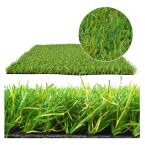

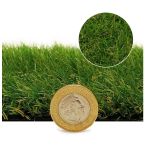


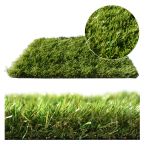


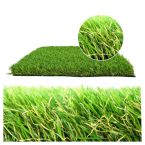
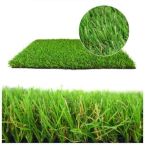

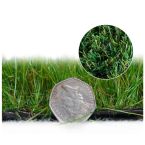
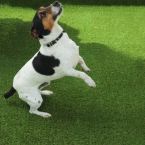






 >
>